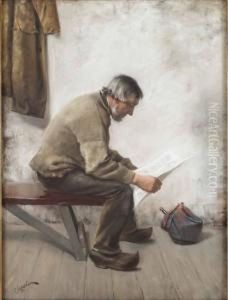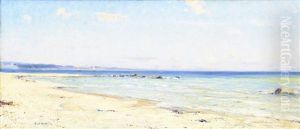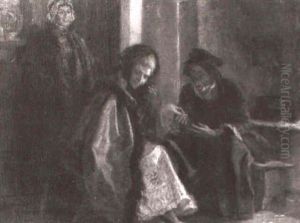Karl Aspelin Paintings
Karl Aspelin was a Swedish artist whose work spans the late 19th and early 20th centuries, reflecting the artistic transitions and cultural shifts of his time. Born on October 18, 1857, in Stockholm, Sweden, Aspelin was part of a generation that witnessed the evolution of painting styles from academic traditions to more modernist expressions. He is less known internationally compared to some of his contemporaries, but within Sweden, his contributions to art and culture are well appreciated.
Aspelin's early life was steeped in an environment that valued education and the arts. He pursued his artistic training at the Royal Swedish Academy of Fine Arts in Stockholm, an institution that played a crucial role in shaping the talents of many Swedish artists of the era. His education there equipped him with the foundational skills and techniques characteristic of academic art, but Aspelin, like many artists of his time, began to explore beyond these conventions as his career progressed.
Throughout his career, Aspelin was known for his landscapes and portraits, capturing the essence of Swedish nature and the character of its people with a sensitivity and clarity that distinguished his work. His landscapes, in particular, are noted for their atmospheric quality and the subtle play of light and color, characteristics that reveal an affinity with the national romantic and impressionist movements that influenced much of Scandinavian art in the late 19th and early 20th centuries.
In addition to painting, Karl Aspelin was also involved in the cultural life of Sweden in other capacities. He contributed to the art education sector and participated in various art societies and exhibitions, both nationally and internationally. His works were included in exhibitions that brought Swedish art to a wider audience, contributing to the international recognition of Scandinavian art during this period.
Karl Aspelin's career reflects a period of transition in art, where the influences of impressionism and national romanticism began to seep into the traditional academic styles, creating a distinct blend that characterized Swedish art at the turn of the century. He passed away on July 21, 1932, leaving behind a legacy that, though perhaps not as widely celebrated as some of his peers, remains an important part of Sweden's artistic heritage.









